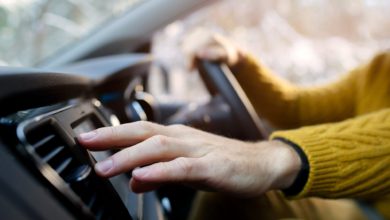Easy Car Maintenance During MCO

As you know the MCO (Movement Control Order) has been extended till the end of the month, it might be a good time to take care of your car during. Although travelling is limited within 10km, you should perform some easy car maintenance to keep your ride functional and in good shape. Service centres and workshops are closed for the time being, therefore it’s advisable to do several inspection checks for your car.
These easy car inspections aren’t rocket science and everyone can do it. You might want to refer to your car owner’s manual or go online to find out about tips and options. There are five important points to check for a car, namely fluids, battery, lights, tyres and wipers.
1. Fluids
Fluids play an important role in almost every aspect of your car, including fuel efficiency, performance and durability. Keeping the fluids at the optimum level will help your car drive better. The top five fluid types are engine oil, coolant, brake fluid, power steering fluid, and windshield washer.
The most critical is the engine oil. Components within the engine spin thousands of times a minute, and it’s the engine oil that keeps everything moving smoothly. To check if there is sufficient engine oil, most cars have a dipstick in the engine bay which is usually a yellow ring-like handle. Ensure the engine is turned off, pull the dipstick out, wipe off any oil with a clean cloth, and repeat this one more time to get an accurate reading.
The coolant prevents the engine from overheating by channelling heat from the engine to the radiator. The coolant is usually stored in a white see-through plastic container towards the front of the engine bay to make it easier to visually check how much coolant is in there.
Another essential fluid is the brake fluid, which is responsible for moving the various components of your car’s braking system. Checking the level of brake fluid is simple. Look for a white canister towards the back of the engine bay, closer to the cabin. Usually the cover is identified by a circle in a parenthesis (O). If the canister is see-through, it’s easier to visually inspect it, otherwise, you could just remove the cap to see how much fluid is inside. Ensure that the engine is turned off and that the car has had time to cool down before removing the cap.
The next two are the power steering and windscreen washer. The power steering denotes a hydraulic-assisted steering system that makes steering a lot easier at any speed. To check the power steering fluid, look for the reservoir or cap in the engine bay labelled with the words ‘Power Steering’ or the steering wheel icon. Some cars have semi-transparent reservoirs for you to easily check on the amount of steering fluid, whilst others have a dip stick installed inside the cap. For windscreen washer, fill up if necessary.
2. Car battery
The car battery has a vital role in running the electrical components in our car. Other than starting our car regularly to ensure the alternator recharges the battery, you should always ensure that battery clamps are tight, clean, and free from corrosion.
First, you can check if there is any bulge on the surface of the battery. Next, check the battery clamps for any signs of corrosion.
Keep track of when you changed the battery by writing it down in your owner’s manual. Alternatively, if you have a voltmeter at home, it is advisable to check the battery voltage occasionally. Anything below 14v when the engine has started means you have a weak battery. It’s also a good idea to get your alternator checked at a later date if you’re getting a reading lower than that.
3. Lights
The next thing you need to check are the lights. Ensure the headlights, taillights, brake lights and turn signal lights are all working before you head out from home. A trick to checking the rear lights is to park close to a wall and using the rear-view mirrors to see if they work properly. If any of your lights are dim, it could be an indication of a bulb reaching its end. Either replace it yourself or take the car to a service center after the MCO.
4. Tyres
The tyres are just as important and they keep your car off the ground. The first thing to look out for are any cuts, tears, or bulges. At the same time, look out for tyres that are flatter than the others. If this happens, you should inflate the tyres.
The next thing to look out for is your tyre pressure. Ideally, you can check the tyre pressure with a pressure gauge. The correct tyre pressure setting can be found in your car manual or at the driver’s door frame. The recommended tyre pressure is different for each car. Using an underinflated or overinflated tyre is dangerous as it will cause uneven wear and result in you having to change your tyres sooner.
Another important thing to be aware of are your tyres’ treads. Every tyre is equipped with treadwear indicators between the centre grooves. Designed to help you monitor tread depth, these indicators are spaced evenly and are positioned parallel to the grooves. If the tread is flushed with the indicators, it’s time to replace the tyre.
5. Windscreen wipers
Windscreen wipers are vital to keeping you safe on the road and allows you to see the road when it’s raining and such. As time goes by, wipers become hard and brittle. To check if your wipers are functioning perfectly, you can switch on the wiper washer function, as soon as you notice the wipers are not providing a clear sweep, but leaving streaks or emitting squeaking noises, it means you need to have your wipers replaced. Wipers are easy to install, so order it online and get it done when necessary.
During the MCO, it is advisable to lift up wipers and clean them with a wet cloth to remove residue and extend the wipers’ durability.
Looking to sell your car? Book an inspection today!




